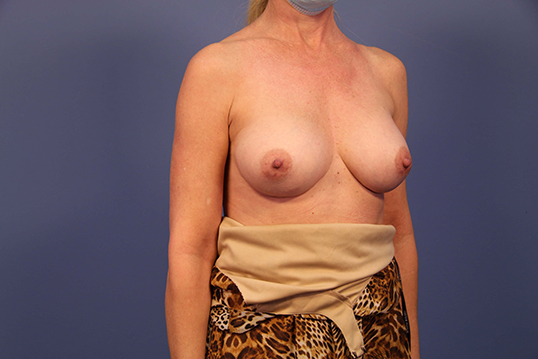
Kate, 35 yrs old, Mommy Makeover
What Is Breast Revision Surgery?
Breast implant revision is a surgical procedure performed to improve the results of a previous breast augmentation. Whether you’re experiencing complications, want to change your implant size or type, or simply desire a different look, this surgery is tailored to help you achieve your unique goals.
Whether you’re experiencing complications, want to change your implant size or type, or simply desire a different look, this surgery is tailored to help you achieve your unique goals.
As one of the most popular cosmetic procedures in America, breast augmentation often produces terrific outcomes, but some women can be dissatisfied with the appearance of their breasts, eventually considering a revision. Keep in mind that not all revision treatments are because of practitioner error.
In general, few breast augmentations end with an unfavorable outcome, but some individuals wish to have larger or smaller implants, while some may have a visible irregularity and would like to have the implant corrected or removed altogether. Furthermore, some women may need revision treatment for a particular health condition. Our experienced plastic surgeon, Dr. Phillip Dauwe, offers breast revision surgery after giving an in-depth consultation at Dauwe Plastic Surgery, helping patients achieve their desired outcome. Call our Dallas, TX office to learn more.
Plan Your Procedure
- Average Procedure Time:
- 1-3 hours
- Procedure Type:
- Outpatient
- Recovery Time:
- 2-3 weeks
- Post-op Appointments:
- Week 2 & 6; Month 3, 6 & 12
What Are Some Reasons for Getting a Breast Revision?
Breast revision surgery can remove an implant that is either damaged, out of position, or no longer desired. The procedure may also be performed to change implant size or remove the implants and replace with a fat transfer. There are other common situations where a revision procedure is desired or required, as detailed below.
Asymmetry
This condition occurs when the breast size or shape looks disproportionate. This may be due to an asymmetric implant size, drooping on one side, implant malposition, capsular contracture, or implant rupture. A thorough assessment would need to take place to determine what is leading to the asymmetry, and Dr. Dauwe would discuss treatment options with you. If a revision surgery is necessary to resolve the problem, Dr. Dauwe will use a variety of techniques and new set of breast implants to create a symmetric result.
Bottoming Out
This is a problem that happens if one or both implants drop too low in your breast. Sometimes, this is a case of a positioning error from the original operation, but more commonly this is due to stretching of your tissues over time. “Bottoming out” is most common in saline breast implants, because the heavy saline filled implant overly expands the lower pole of the breast. To correct this, the implants need to be repositioned with revision breast surgery. In addition to a new surgically created implant pocket, Dr. Dauwe usually recommends using a new set of breast implants too. For patients with saline breast implants, going to a silicone breast implant usually will reduce the risk of this happening again.
Double bubble deformity
When the implant descends below the natural crease below your breast, it can create a scalloped or “double bubble” deformity at the base of your breast. This is created by the implant creating a new crease or fold below your natural breast fold. Dr. Dauwe can correct this deformity with internal stitches and pocket reconstruction. You may desire a breast lift, implant size change, or repositioning procedure at the same time.
Breast Size
Sometimes a secondary breast surgery is as straightforward as getting a smaller or larger sized breast implant. During the first surgery, you may have opted to go too conservative or gone a bit too large. A different implant size can be inserted to reach the desired look.
Capsular Contracture
Scar tissue formation is your body’s normal response to a breast implant, and this scar tissue capsule should be thin and unnoticeable. Capsular contracture refers to thickening and hardening of this scar tissue surrounding the breast implant. In some instances, the hardening scar tissue can alter the shape or feel of the implant, and it can progress to causing pain in your breast. If this occurs, capsular contracture surgery can be performed to remove the hardened scar tissue and place a new breast implant.
Implant Rippling
This condition occurs when you see rippling or wrinkles under the skin, and is usually caused by rippling in the shell of the implant. This irregularity is most commonly seen along the side of the breast, but can occur anywhere. Rippling is generally found in patients with thinner soft tissues. Newer generation implants are more optimally filled, and have reduced chance of rippling. This issue can be corrected or improved by simply switching to a newer silicone breast implant.
Implant Rupture
Though this is uncommon, breast implant rupture can occur. When a saline implant ruptures, the implant will typically deflate immediately as your body absorbs the saline fluid. If a silicone implant ruptures, it is not absorbed but can lead to breast asymmetry or hardening. A rupture of this implant type is generally “silent” in that it does not cause any symptoms, and can only be seen by MRI. Whether silicone or saline, when a rupture occurs, Dr. Dauwe recommends breast implant revision surgery to replace the ruptured implant.
Symmastia
Symmastia is a condition that takes place when breast implants are inserted and placed too closely together. Most commonly, this is seen when breast implants are placed over the muscle, but it can happen if the breast implant is too wide or the pocket has stretched over the center of your chest. A revision surgery can correct this problem by choosing an implant that fits your anatomy, placing the implant under the muscle, or tightening the breast implant pocket over your central chest.
What Is Recovery Like After a Breast Revision?
Following your procedure and a brief observation period, you can go home to begin your recovery. Recovery from a revision surgery varies depending on what is involved in your procedure. Revision surgery usually has an easier recovery than the first operation you had, and usually lasts 2-3 weeks. You should slowly start to see your surgical results when the bruising and swelling go away. Dr. Dauwe will discuss what should be expected while you recover and provide recommendations to help you heal faster. You should go to follow-up visits as often as directed so Dr. Dauwe can monitor your healing and results.
“Dauwe possesses a remarkable ability to listen and truly understand the results I was aiming for. He made me feel like I was his only patient, giving me personalized attention and his calm demeanor made the entire process much less stressful. He has an amazing eye for detail and the technical skill to match, delivering results that exceeded my expectations. The whole office team, especially Julie, made me feel comfortable and supported every step of the way. They are not only professional, but also endlessly patient, knowledgeable, and just a joy to be around. The entire experience, from consultation to recovery, was transformative and positive. I couldn’t be happier with my decision to choose Dr. Dauwe and I wholeheartedly recommend him and his team to anyone seeking exceptional care and outstanding results!”
Does a Breast Revision Create New Scars?
When possible, Dr. Dauwe will make incisions for revision surgery in the original augmentation incisions. If this isn’t possible, he will place the revision incisions where they are least visible. Revision surgery usually requires an inframammary incision (beneath the breast fold), but a periareolar incision (along the lower border of the areola) can be used. Generally, implants placed through the armpit (transaxillary incision), cannot be revised through this same incision. Dr. Dauwe or a member of his team will explain scar care instructions so your incisions heal smoothly and blend with your skin.
How Much Does Breast Revision Surgery Cost?
Your cost for breast revision surgery will vary based on the complexity of your procedure. In your consultation, Dr. Dauwe will listen carefully to your needs and goals before completing a physical examination of your implants. After this, he will talk about your choices before creating your treatment plan. The total cost of revision surgery will be based on the complexity of the procedure, plus your new implants. As a way to help make your surgery affordable, Dauwe Plastic Surgery accepts many different payments, and we can give you information on no-interest financing.
Frequently Asked Questions About Breast Revision
What if Dr. Dauwe wasn't my original surgeon?
How soon after my original breast augmentation can I get a revision?
Can I remove my implants without replacing them?
Can breast revision surgery address loose skin?
When do I need to change my breast implants?
Schedule Your Breast Revision Consultation
Revision surgery for breast implants is a specialized procedure tailored for your aesthetic goals by Dr. Phillip Dauwe. If you notice a visible problem with your breast augmentation results or desire a different result, we invite you to get in touch with our Dallas, TX office to make your appointment at Dauwe Plastic Surgery. There are many factors to consider, and Dr. Dauwe will perform a full physical assessment, discuss your goals, and create a tailored breast revision treatment plan.





